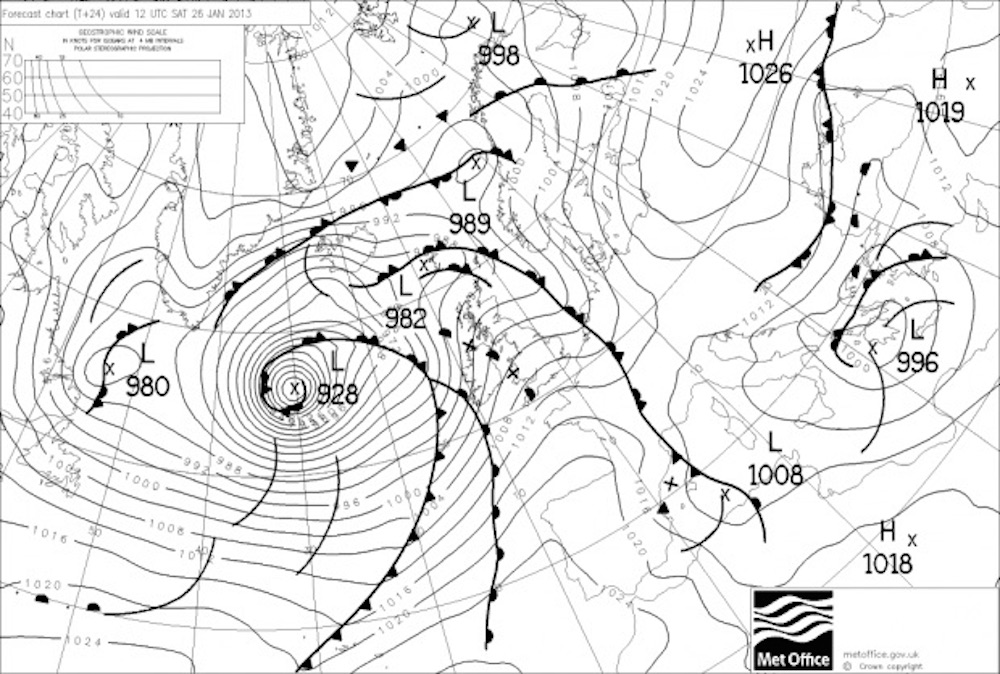Not so long ago a surfer had to be able to decipher complicated weather charts in order to know when and where to surf. Nowadays much of that raw data is processed by reasonably accurate online surf forecasts, which save him or her the trouble. Still, the more you know about how waves are formed — from their conception in the open ocean to their birth (or death) upon the shore — the better you will be at predicting the surf. Plus, using terms like “bathymetry” and “closely packed isobars” at parties is known to drive members of the opposite sex wild.
How Waves Are Formed: Where do waves come from?
Waves are created by winds blowing far out to sea in a shorewards direction, and transferring their energy from the air to the water. There are three important variables here which determine the character of the resultant swell: the wind’s strength; its duration, or the amount of time for which it blows; and its “fetch”, or the distance of open water over which it blows in the same direction. The greater these variables, the larger the swell and the longer its “period” — this is the amount of time in between successive waves as they pass a given point.
And where does the wind come from? Wind is basically just air moving from an area of high pressure to one of low pressure, and by studying pressure charts, which consist of contour lines called isobars, an experienced surf forecaster will be able to form a decent idea of the short-term surf conditions at a given spot. A low pressure system out to sea, represented by closely packed isobars gathered together in a roughly circular formation, translates as strong winds blowing over the water’s surface and thereby creating waves. In the northern hemisphere, wind blows anticlockwise around a low pressure and vice versa.







